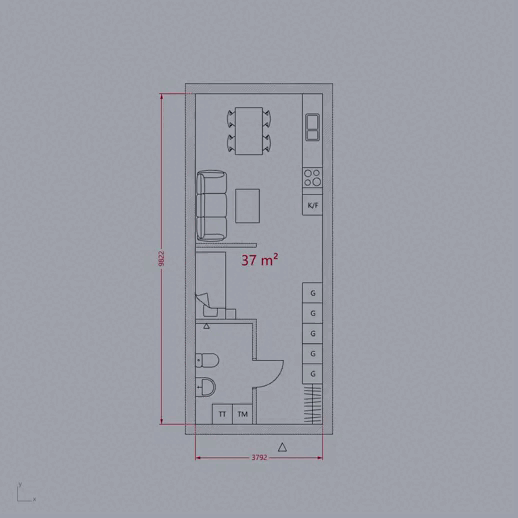

SOBRE EL AUTOR
Alberto López Urízar Architect, Jr. Creative Design Leader
“Architecture allows us to say how we want our life to be, our personal and collective life, and then take steps to achieve it to some extent. No matter how small the measure is, it Will have been worth it.” – Fernando González Gortázar
Automated Design
The increase in the use of technological tools has been seen more regularly in recent years, consequently, all disciplines have obtained certain benefits to improve their development, and their objectives, and architecture is no exception.
Architectural design is one of the many branches in which artificial intelligence has been implemented, using different tools, these systems can create artistic images through a description, combining different concepts, styles and graphic features. There are examples in the music industry, where they rely on these systems to make their promotional covers today.
Artificial Intelligence (AI) in Architecture
The implementation of new technological systems in architecture can be reflected in new construction and manufacturing methods.
In the creative process, he has taken advantage of these new tools, with the constant use of software that allows the automation of the process itself.
AI Tools for Architecture
The dedicated tools for architects have the ability to help in the initial phases of the project, easily configuring its dimensions and characteristics, obtaining multiple options for living space.

Application of artificial intelligence tools in the design of the architectural plan of a dwelling house and its adaptations based on its measurements. (Archdaily)
What are the benefits of AI?
These tools work from the automation of repetitive tasks, synthesizing a large amount of information to solve architectural problems, thus allowing the user to solve some defining aspects of the project, such as the height of the building, the thickness of the walls or the interaction of spaces.
The use of the algorithm will allow the architect to have a greater number of spatial configurations in less time, giving him the opportunity to cover different tasks and evaluate the characteristics of the design more carefully. They have the ability to better adapt to the characteristics and requests of the user; the more this tool is used, the smarter and more beneficial it will be.

Application of artificial intelligence tools in the 3D model of a residential house and its adaptations based on its measurements. (Archdaily)

Distribution of the modules of the Villas Ephimera project.
How is AI approached in Cafeína Design?
At Cafeína Design we are constantly innovating in strategies and work methods, implementing new technological tools, all with the purpose of improving and making the design process more efficient, and fulfilling it satisfactorily.
A clear example of them is the "Villas Ephimera" project. These tools were used for this project, varying the location, arrangement and number of residential elements, in order to obtain the largest possible number of modules, without damaging the existing vegetation on the property.
Thanks to these tools the results of this project were favorable; the project and its environment are integrated in a satisfactory way.
Conclusion
Technology is one of the means of transformation that will guide humans towards a new world, therefore, implementation and adaptation is essential. Within architecture there is a history of constant adaptability to new tools that arise day by day, however, like any other branch of knowledge, there is an attachment to what exists, as a consequence there is fear and rejection of the new and unknown, which implies a brake on the infinite possibilities that technology offers us today, not making use of them would imply a delay in knowledge and innovation.
Want to know more about this topic?
